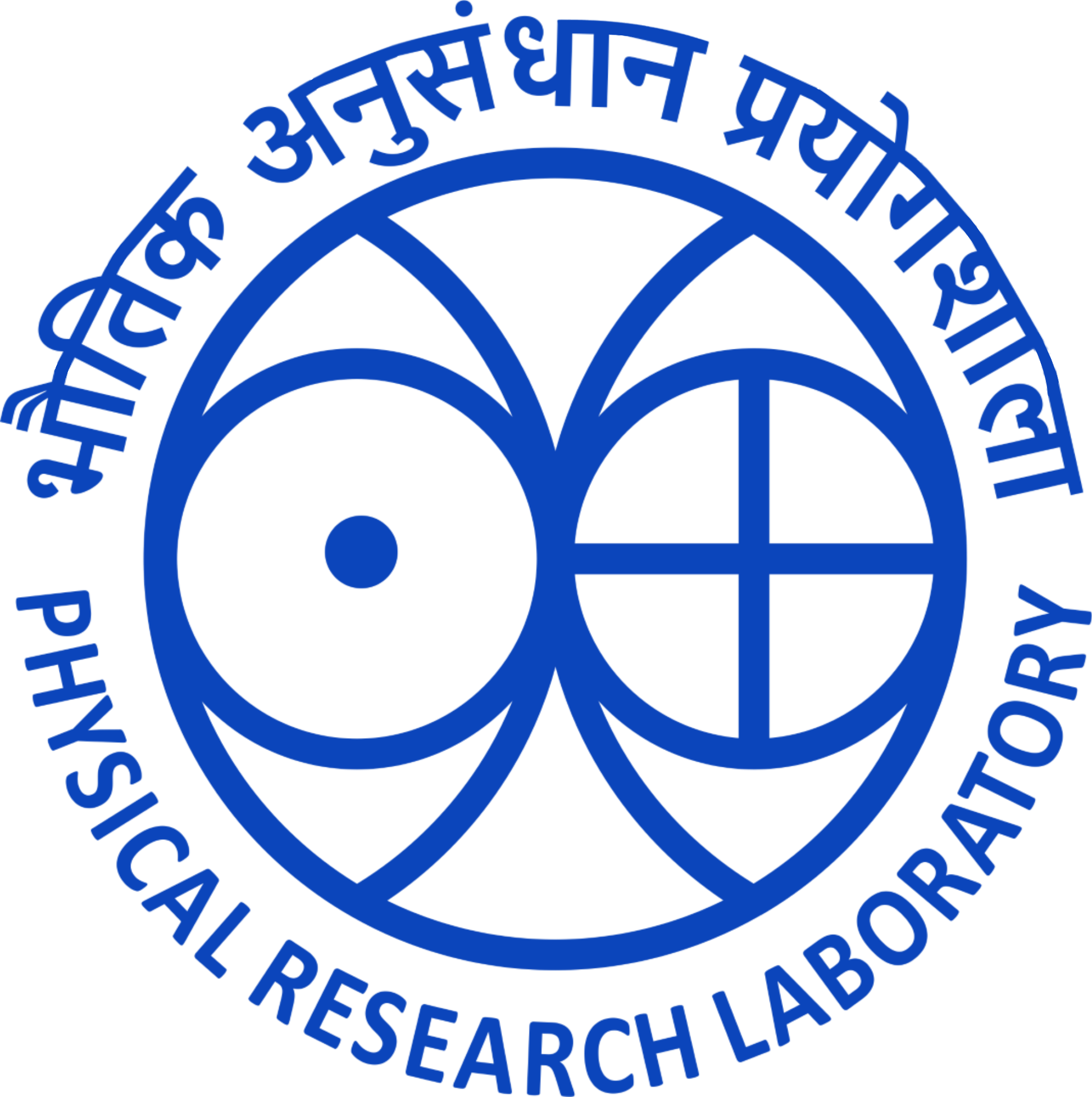


How did the Moon evolve to become the celestial body we see now from its initial formation days? We continue to seek answers to this question, and precise information on the elemental composition of lunar soil and rocks from different parts of the Moon is key to understanding its evolutionary history. Precise elemental abundances of lunar soil and rocks from a few parts of the Moon are available through laboratory analysis of samples brought back to the Earth or by carrying out in-situ analysis using the instruments on the lunar rovers/landers. The locations on the near side of the Moon where such composition measurements are available can be seen in the Figure 1. From the image one can see that the earlier measurements were mostly in the “mare” regions of the Moon that appear dark, except for Apollo 16 and Luna 20, which were in the “highland” regions that appear bright. It can also be seen that all of them are limited to equatorial to mid-latitude regions. This makes the compositional measurements by Chandrayaan-3 in the never-explored higher latitude highland regions near south pole a unique addition to understand our Moon.
The Vikram lander of the Chandrayaan-3 mission, along with its Pragyan rover, made a historic soft landing on August 23, 2023, in the south polar region of the Moon, at a location now named Shiv Shakti Point. The Alpha Particle X-ray Spectrometer (APXS), developed by the Physical Research Laboratory (PRL) in Ahmedabad, was one of the scientific experiments on the Pragyan rover. The primary scientific objective of APXS is to measure the abundance of various elements, such as silicon, magnesium, aluminum, calcium, iron, and others, in the lunar soil near the landing site. Learn more about APXS here.
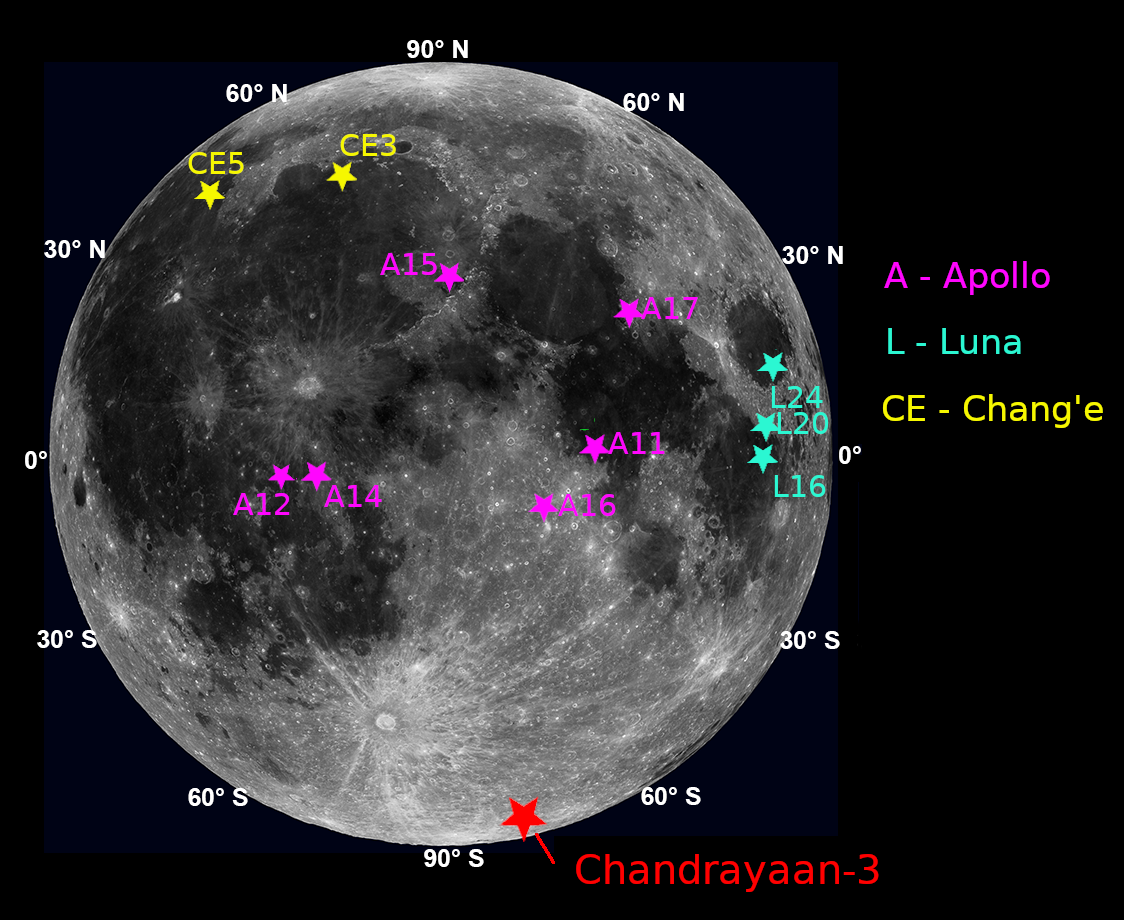
Figure 1: Landing sites on the near side of the Moon for which compositional measurements are available either from return samples or in-situ measurements. Two locations on the far side of the Moon are not shown here. Chandrayaan-3 landing site, Shiv Shakti point, is the first and only measurement closer to the polar regions and among the few in highland regions.
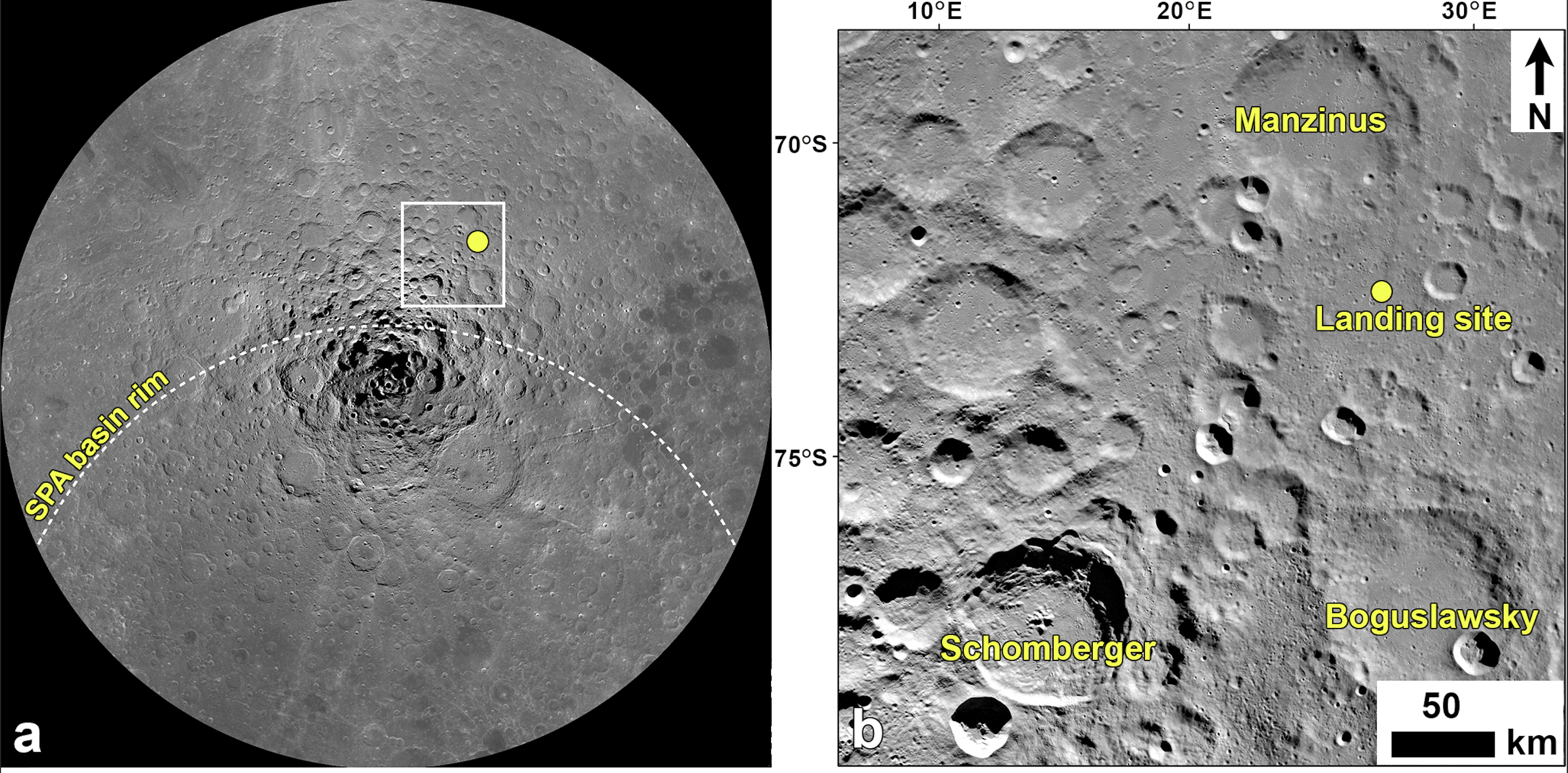
Figure 2: Polar mosaic image from LRO WAC showing the Chandrayaan-3 landing site - Shiv Shakti point (left) and zoomed-in view around the landing site showing nearby craters (right).
Figure 2 shows a polar mosaic image around the south pole of the Moon, obtained by NASA's Lunar Reconnaissance Orbiter (LRO), marking the location of the Chandrayaan-3 landing site. The right image in figure 2 is a zoomed-in view of the landing site, showing several craters. The Pragyan rover was deployed onto the lunar surface after the landing, and after initial tests, APXS observations were initiated. APXS is mounted on the rover with a deployable mechanism, stowed for calibration and deployed at each location to bring the 244Cm sources and detector closer to the surface for lunar observation. A GIF of the APXS deployment on the lunar surface, as captured by the lander camera, is shown in Figure 3.
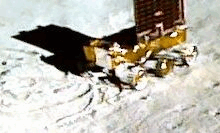
Figure 3: APXS deployment on the Moon captured by Lander camera.
Since landing on the lunar surface, the rover had traversed approximately 103 meters over a span of about 10 days. During this journey, the rover encountered a variety of lunar morphologies, which provided valuable insights into the composition and characteristics of the local lunar terrain. Among the observed surface types were smooth regions devoid of visible craters and boulders, boulder fields resulting from recent cratering events, and areas situated near the rims of small craters. Figure 4 shows the diverse morphologies encountered by Pragyan on lunar surface.
The APXS conducted scientific observations at these varied morphologies at 23 locations along the rover's path. The locations of the APXS scientific observations are marked in Figure 5. Different colors of rectangles correspond to the diverse regions as marked by respective color in figure 4.
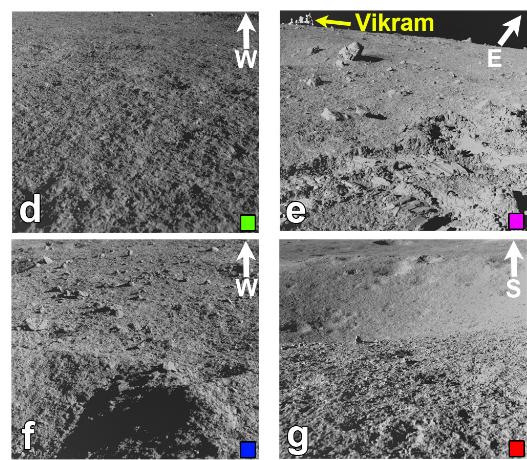
Figure 4: Diverse terrains encountered by the Pragyan rover as captured by its Navigation camera are shown in the remaining panels: crater and boulder free region (d), surface disturbed by rover track (e), rock fragments around a crater (f), close to the rim of a ∼10 m diameter crater (g).
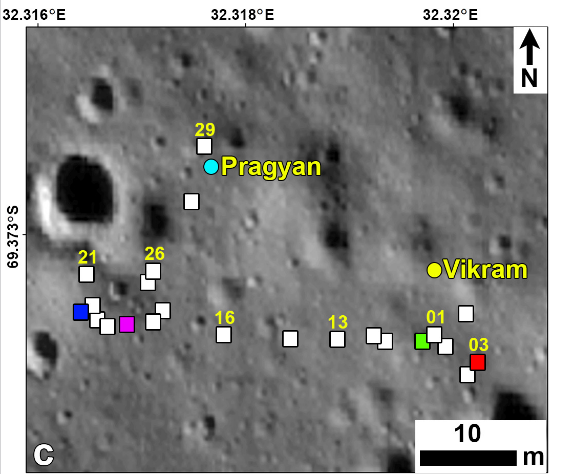
Figure 5: Locations of 23 scientific observations of APXS (marked as white squares) along the rover path overlaid on the high-resolution image of the region from Chandrayaan-2 OHRC.
From the data recorded by APXS at each of the 23 locations, a spectrum showing the number of photon counts as a function of photon energy is generated. The spectrum obtained with APXS at one of the locations is shown in Figure 6. The characteristic X-ray line peaks corresponding to all major and minor elements in the lunar soil are detected in the spectrum. The abundances of all detected elements are computed by analyzing the spectra from each location. Notably, despite the varying terrains at each location, the composition at all 23 locations is very uniform, which is an interesting finding from APXS. The average elemental composition of the soil near Shiv Shakti Point, as measured by APXS, is shown as a pie chart in Figure 7.
To learn about the rocks constituting the observed soil, the composition is compared with that of major rocks in the lunar highlands. Figure 8 illustrates how some properties of the APXS-measured soil composition compare with those of two types of rocks: Ferroan Anorthosite (FAN) and Magnesian suite (Mg-suite), previously obtained from lunar samples returned to Earth. The figure shows that the soil lies between the FAN and Mg-suite groups, indicating that the soil is a mixture of these two rock types, with FAN being the dominant component. We can also infer the minerals constituting the soil from the measured elemental composition. Figure 9 displays the inferred mineral composition, with plagioclase as the dominant mineral, as expected for the highland region. However, the concentration of Mg-rich minerals such as olivine and pyroxene is higher than typically expected in the surficial layers of lunar highland regions.
The dominance of FAN in the soil strongly supports the Lunar Magma Ocean (LMO) hypothesis. According to this widely accepted theory on the early evolution of the Moon, the Moon was entirely a magma ocean when it formed. As the magma cooled, heavier minerals such as olivine and pyroxene sank and formed the inner layers of the Moon, while the lighter mineral plagioclase floated and formed the outer crust. Thus, APXS observations of soil with a dominant FAN component support this theory.
What is more interesting is the presence of excess Mg-rich minerals (also called mafic minerals) in the soil observed by APXS. The answer to this question takes us to an event about 4.2 to 4.3 billion years ago on the Moon, just after the formation of different layers due to the cooling of the global magma ocean. An asteroid impact in the south polar region of the Moon caused the formation of the largest known impact basin in the solar system, named the South Pole-Aitken (SPA) basin. This basin is about 2500 km in diameter, with its estimated boundary near the landing site shown in Figure 2. The impact was so deep that it excavated the deeper layers of the Moon, which have higher amounts of mafic minerals, and displaced them to the surrounding areas, including Shiv Shakti Point, which is only 350 km away from the rim of the SPA basin. Since then, several impacts in that region have resulted in cratering and thorough mixing of the excavated mafic material with FAN in the surficial layer. This has resulted in the uniform composition observed by the APXS instrument. The schematic diagram in Figure 10 shows snapshots of lunar geological history outlining these processes, through which the currently measured composition of lunar regolith in and around Shiv Shakti Point can be explained.
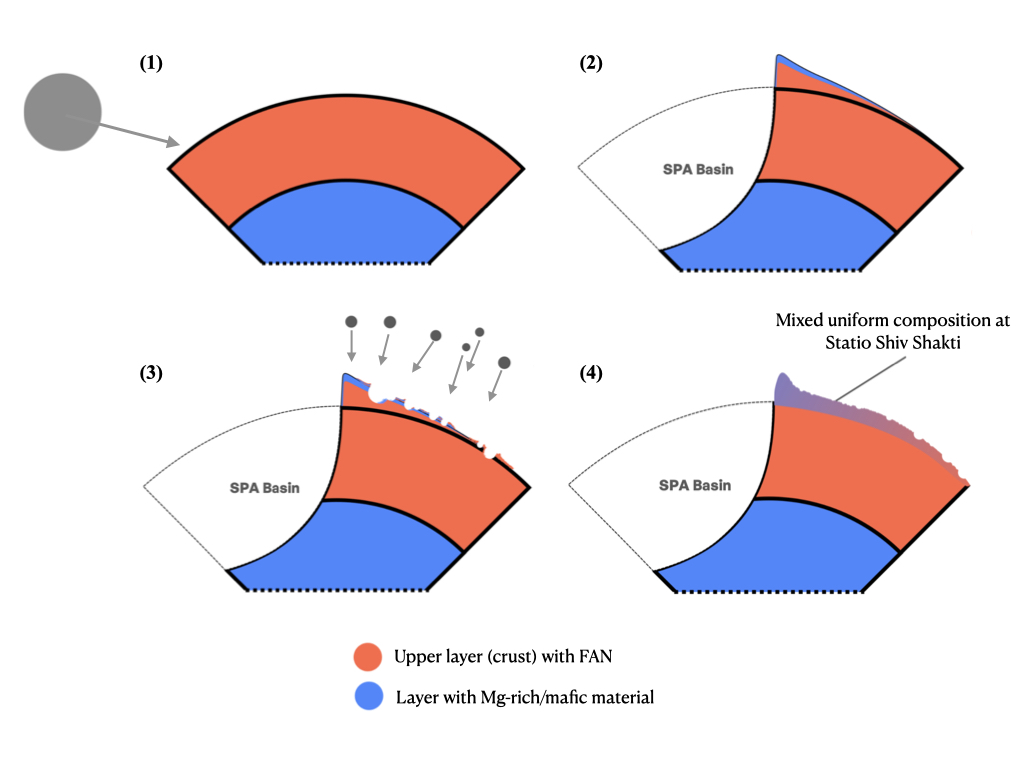
Figure 10: Schematic diagram showing snapshots from lunar geological history that could explain the current composition at Shiv Shakti point measured by APXS. The first panel shows the impactor that led to the formation of the South Pole-Aitken basin about 4.2-4.3 billion years ago after forming upper layers with FAN and lower layers with mafic minerals from the cooling of the lunar magma ocean. The second panel shows the SPA basin ejecta with deeper layer materials brought to the surface. In the third panel, subsequent cratering activity is represented, which leads to the mixing of surficial material with the deeper layer material. The last panel shows the current state at Shiv Shakti point, with a uniform composition resulting from thoroughly mixing the two components.